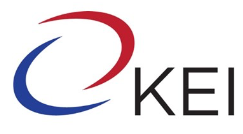1981 Posts located
Asia
1981 Posts located
January 4, 2024
December 19, 2023
November 30, 2023
November 30, 2023
The year 2006 witnessed increasing concern among both Americans and South Koreans that their alliance of more than 50 years might be in jeopardy. Differences between the two governments over…
May 25, 2011
Monetary and Exchange Rate Policy in Declining Centrally Planned Economies and in Early Transition Economies: Some Observations of North Korea
May 25, 2011
North Korean Economic Reform: An Uncertain Future for a Third-Way Exploration
May 25, 2011
May 25, 2011
Recently released data from the Department of Commerce confirmed that the United States achieved record-level export of services to South Korea in 2018 – $24.5 billion. Combined with the trade…
April 5, 2019
We imagine North Korea as a country that is carrying on not only a conflict left over from the Cold War, but also a decrepit legacy economy from the past.…
March 29, 2019
The second summit between President Donald Trump and North Korean leader Kim Jong-un on February 27 and 28 ended without an agreement. The key difference in the two leaders’ negotiating…
March 8, 2019
As the complex negotiations between North Korea, the United States, and South Korea continue, it is worthwhile to review what the current U.S. presence on the Korean Peninsula looks like.…
March 5, 2019
Given the paucity of data on North Korea, the food prices provided by Rimjingang and DailyNK are often used for a variety of analytic purposes: to monitor seasonal fluctuations that most affect the poor; as a wider proxy for inflation; and as an indicator of larger constraints on the economy, including sanctions and the border…
March 31, 2022
On February 22, 2022, the Korea Fair Trade Commission (KFTC) conditionally approved the merger of the two largest air carriers in South Korea—Korean Air and Asiana Airlines. This approval comes nearly a year and a half since Korean Air’s announcement that it would buy a nearly 64% stake in its sole major domestic competitor for…
March 21, 2022
In December 2021, Yoon Suk-yeol’s campaign released a short candidate clip. Looking and sounding just like the candidate, the ‘man’ in the video says, “hello, it’s ‘AI Yoon Suk-yeol,’ are you surprised at how much I look like [him]?” Since then, the campaign would go on to release short clips of the candidate responding to…
March 16, 2022
Labor market dualism – the segmentation between regular and non-regular workers -- is deeply entrenched in Korea’s labor market. Regular workers receive higher wages and social insurance coverage and a high degree of job security, while non-regular workers receive lower wages, are less likely to be covered by social insurance and work in precarious jobs.…
